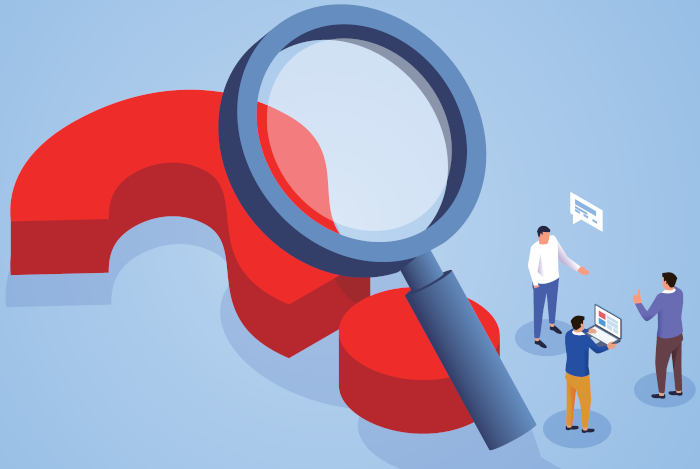Observation is a common term in the world of research. Both qualitative and quantitative research require what people call observation. This activity aims to prove the validity of knowledge, research objects, and events in the field.
The universe contains vast knowledge. What happens in nature, both involving the universe and what occurs due to natural phenomena, all require observation or observation to prove the truth.
What is observation?

The meaning of the word observation is a form of empirical scientific activity based on facts in the field or in the text, through a real sensory experience without any engineering or manipulation. Going directly to the field is an observation activity to get real and valid results.
Data search activities through this observation come from the main party or first hand. Based on the type, this observation is divided into two namely:
Direct Observation
Observation activities directly in the field, at the location of the observation site by meeting directly with the parties or objects of observation. In research usually use this method to obtain valid data.
Indirect Observation
Indirect observation can usually be done by means of observations such as observations on film, Laboratories, recordings, satellite images, and as. In some types of research objects you can do with indirect observation methods.
Purpose Of Observation
The purpose of observation is to obtain valid information on a knowledge that includes several aspects.
For example, in the world of Education, observation is one way to observe how the teaching and learning process is good so that you can know the real picture for conclusions and evaluation of learning conditions.
In general, the following is the purpose of the observation:
Provide a Valid and clear picture
The observation process aims to get a clear and valid picture of an object being observed. This information will later become important knowledge for others. As data, references, which can have an effect on programs and policies.
Get The Conclusion
Observation you can do in order to find the conclusion to a knowledge. The object of observation is natural events, social events, facts on the ground and others require observation first concretely before becoming a conclusion.
The existence of some facts that occur requires observation, subsequent collection, interpretation and conclusion.
Reference Data and information
How can people get valid and clear data and information? One way is to make observations. Going directly to the field will be different from getting information from others. Even more so in the research process. Data and information must be absolutely valid for research results to be trusted.
Observation Steps
What are the steps to perform this observation method? the first step in making the text of the report is the observation results:
Define Object
In a study, of course, you have an object that you will observe. Whether human, natural events, social interactions, and so on. Once this object is clear, then you have to prepare for the next stage before taking to the field.
Present The Research Framework
How does your research framework, this should be clear before going down the observation. The goal is that you can collect complete data in accordance with the needs of the research framework.
Location Selection
Where you will make observations, decide in advance. Observation should be at the location of the object of study. If it is related to social interaction and human activity, then you need informants at the observation site.
Determination Of The Method Of Observation
When making observations, what methods will you use to collect data? All this you have to plan in advance. For example, through interviews, questionnaires, documentation, and more.
Methods Of Analysis
After you get the data, then what you have to prepare is the analysis method that you will use. In qualitative methods for example you can use theory as a knife of analysis. Whereas in quantitative research you can use the appropriate statistical methods.
What is the observational research method?
Observation research method is a method of direct observation down to the field by recording factual data for you to do the analysis with the right method. The recording must be systematic as a feature of the observation.
Observation in this study into several options of existing methods. Usually this observation will help researchers in obtaining raw data of an object of study.
When making observations in the field, you also need to choose again what kind of method you will do to collect data.
So not only observe and record, you can also do data documentation in the field, conduct interview techniques or distribute questionnaires to respondents.
Characteristics and benefits of observation
Are all activities on the ground an observation? Not necessarily. There are several specific characteristics that identify the activity as a form of observation. The observation text is a text that must contain the following characteristics:
Objective
This means that the observation process must be based on the existing object, it cannot be a fictitious result or an essay. Its objective nature.
Factual
The observation process must refer to the facts on the ground. This factual nature will be the cornerstone of interpretation and inference. The strength of this observation is the fact on which conclusions are based.
Systematics
The observation process must also be done systematically so that it can produce real and clear conclusions. If the implementation is not systematic, it will make it difficult to interpret until the conclusion of the observation of facts in the field.
Observation as a research method also has benefits if you compare it with other methods. The benefits of observational methods are benefits that are significantly related to the results and conclusions of a study. What are the benefits of this method?
Obtain results relevant to previous research.
Get results that can be a reference for predicting an event in the future.
Describe concretely about the objects and events you observe on the ground.
So the form of real evidence against an issue or case that is or has been developing. Direct Survey to the field will be the proof.
Can encourage new discoveries if you combine again with experimental research methods.
Apart from the term observation as a research method, in everyday activities we also need observation to make sure to see directly an event factually.
Something that we have found observational data will usually be more valid and you can also make conclusions based on factual data from the field.
Conclusion
Well, if you are or will be doing research, it is important to understand these terms and observation techniques. Your mistakes in making observations will have an impact on data collection errors so that the final results of your research are not reliable.Observation is observation. Research methods that until now have been quite an ideal way to collect data. If you want to make valid conclusions, start from doing field observations.



